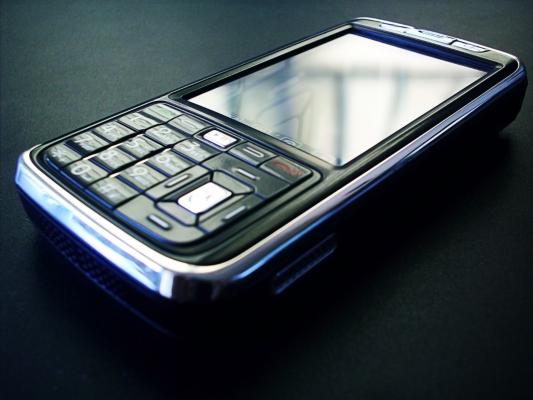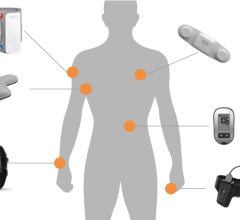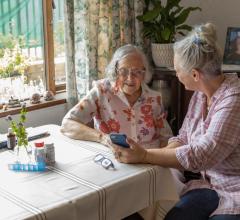
May 6, 2014 — Studies presented at the World Heart Federation’s World Congress of Cardiology on May 5, 2014 showcased new research on best practices in the design and development of healthcare mobile applications, in order to optimize usability and maximize impact in different populations across the world.
Around 75 percent of the world’s inhabitants now have access to a mobile phone. Out of the estimated 6 billion phone subscriptions worldwide, 5 billion are in developing countries. Figures show there were more than 30 billion app downloads worldwide in 2012, including a surge in the uptake of apps focused on education and information rather than entertainment.
This wide access to mobile applications provides enormous opportunities to improve the reach and effectiveness of health self-management programs and enhance communication between patients and healthcare professionals, particularly in the field of cardiovascular disease (CVD). In order to ensure that apps are responsive to the needs of patients and healthcare professionals, experts say the development of best practices in the field is a priority.
National examples presented at the World Congress of Cardiology illustrate how effective e-health strategies can be designed to educate and improve health outcomes in the prevention and treatment of CVD in two very different healthcare settings.
Australia: Using E-health to Support Lifestyle Changes, Prevent CVD
E-health programs can be very useful in the prevention of CVD, in particular to support lifestyle changes in patients at high risk of CVD or who have already experienced a cardiac event. In this study, led by The George Institute for Global Health, Australian academics reviewed how Web and mobile apps could be best designed for effective CVD risk reduction and found that the use of personas and journey maps are valuable tools to create effective e-health tools.
To reach this conclusion, a multi-disciplinary team of researchers ran a workshop with the purpose of mapping a journey framework, actually reconstructing the steps of a CVD patient from life before their cardiac event to post-hospital care. Interviews, photo-diaries and a workshop involving CVD patients and those at high CVD risk were held, to capture personal experiences and refine the journey. Following this, four “personas” of patients were created, each of them representing different risk profiles across a range of demographics, including needs, backgrounds and ages.
Using these personas and mapping, the team identified the main touch points where e-health tools could provide additional support to respond to specific patient’s needs, such as ‘help me understand my risk of CVD’ or ‘help motivate me’.
“E-Health is reshaping healthcare delivery across the globe. It provides new opportunities to improve healthcare for patients and optimize lifestyle-related changes for cardiovascular disease prevention. User-centered tools like the CVD journey maps and personas help us to understand people’s needs of users in relation to their lifestyles, motivations and choices and can help in the development of successful, helpful and relevant mobile applications for all,” commented Associate Prof. David Peiris, program head Primary Health Care Research, The George Institute for Global Health, University of Sydney, Australia.
Apps for All: Best Practice in Developing Mobile Apps in a Low Resource Setting in India
A study undertaken by Dhruv Kazi, Division of Cardiology, University of California San Francisco, and colleagues studied the role of an m-health intervention to reduce death and disability from stroke among low-literacy patients on blood thinning treatments. This study, based in Bangalore, India, tested a number of prototypes with stakeholders in the healthcare system, including patients, nurses, physicians, administrators, information technology staff, engineers and software developers in hospital and community-based settings in Mysore and Bangalore. The results showed that:
- Patients and providers were enthusiastic about mobile technology-based solutions for healthcare, but less than 50 percent had used a healthcare app prior to the interview.
- Despite the higher costs, patients preferred voice-based solutions to text-based solutions because of limited literacy and numeracy.
- Use of drop-down menus and syntax clarification significantly reduced user-error and improved efficiency, particularly among low-literacy users, e.g., dates (MM/DD/YYYY vs. DD/MM/YYYY), phone numbers (e.g., with or without preceding area code) and laboratory results involving decimal points.
- Patients and providers requested versatile apps that could be accessed from a variety of devices (e.g., desktops, tablets and android phones).
- Role-based passwords and data encryption were feasible mechanisms for data security even in low-resource settings.
“These overarching principles can guide entrepreneurs, software developers, public health experts, and governments as they develop locally-relevant mobile solutions to address the ongoing epidemic of cardiovascular disease. We found that agile development practices — including rapid, iterative prototyping and early, frequent engagement of patients and providers — yielded invaluable insights that greatly enhanced the usability and acceptability of the final product. Well-designed and validated mobile applications can revolutionize the delivery of affordable, high quality healthcare in low-resource settings, but only if they are sensitive to the needs of the end-user. Applied correctly, m-health has the potential to alleviate the burden of cardiovascular disease in the most vulnerable sections of society,” explained Kazi.
For more information: www.worldheart.org


 November 20, 2023
November 20, 2023 








